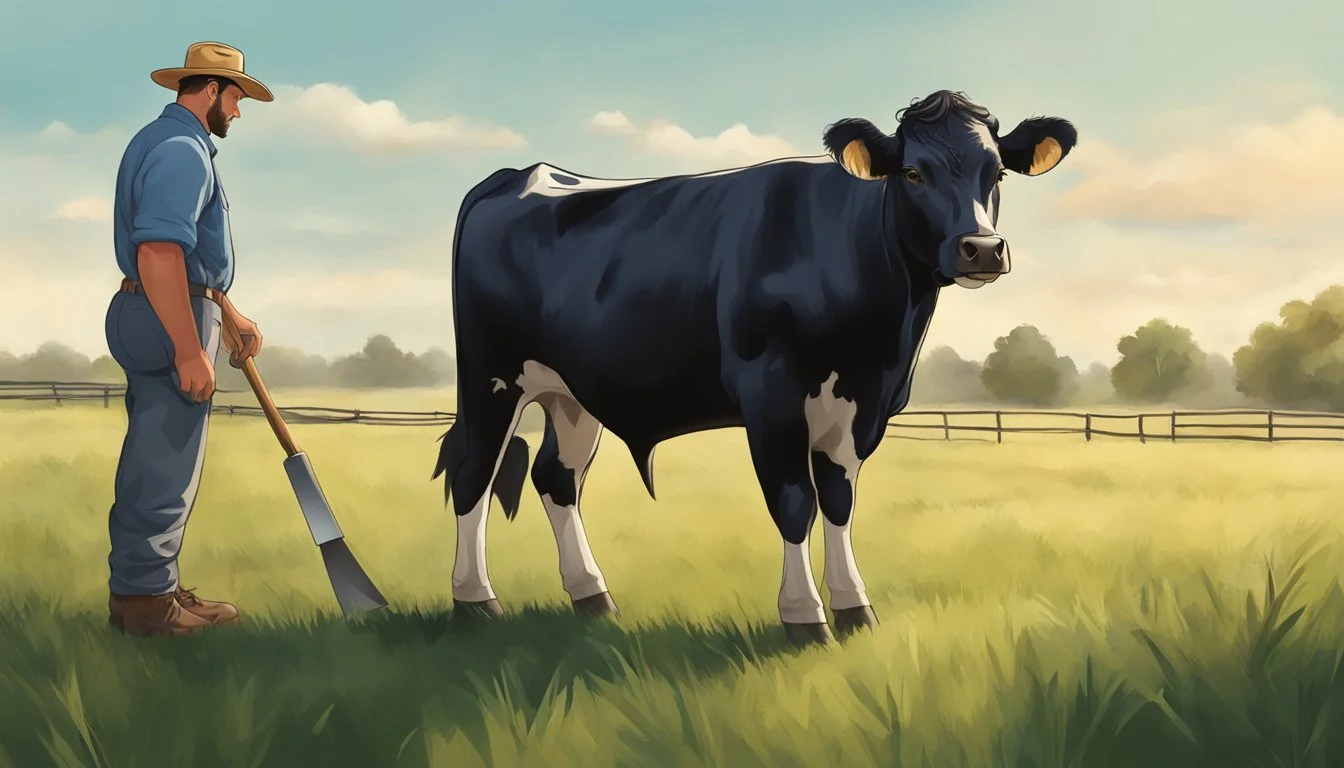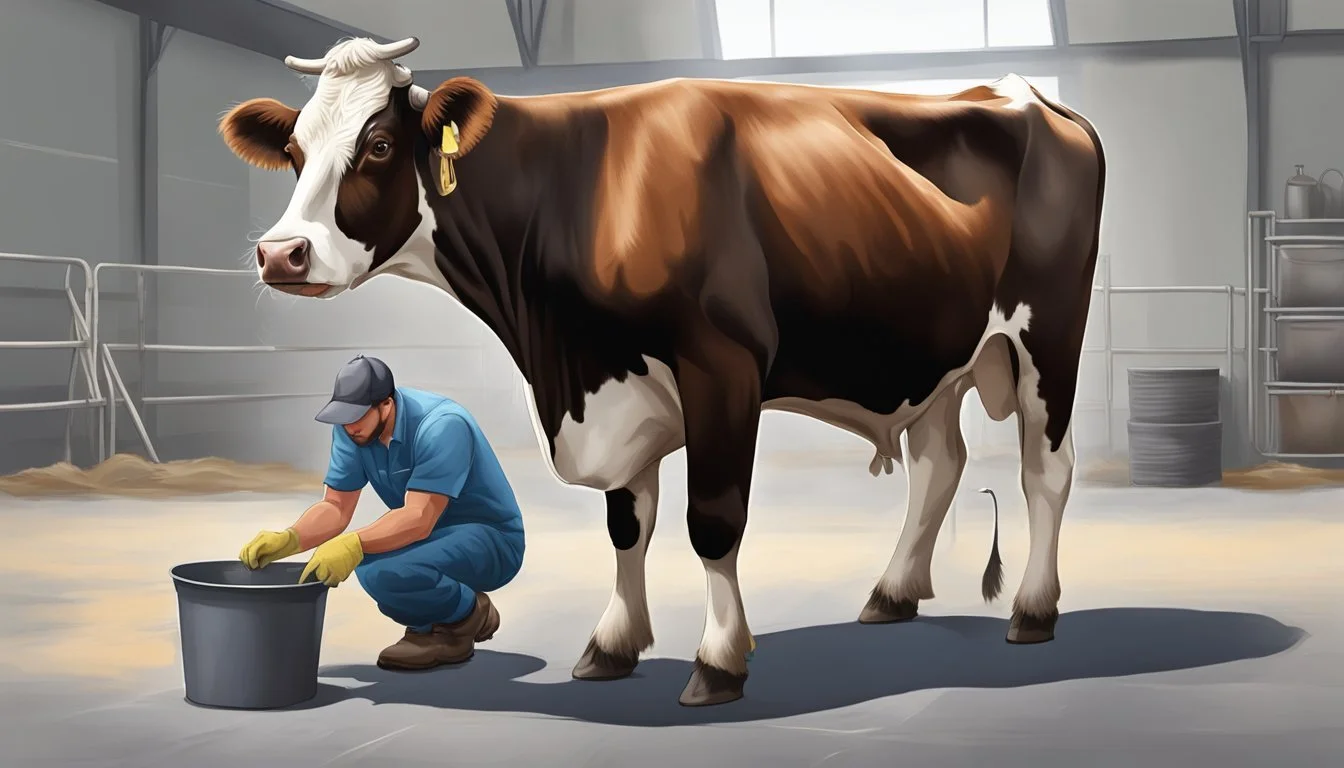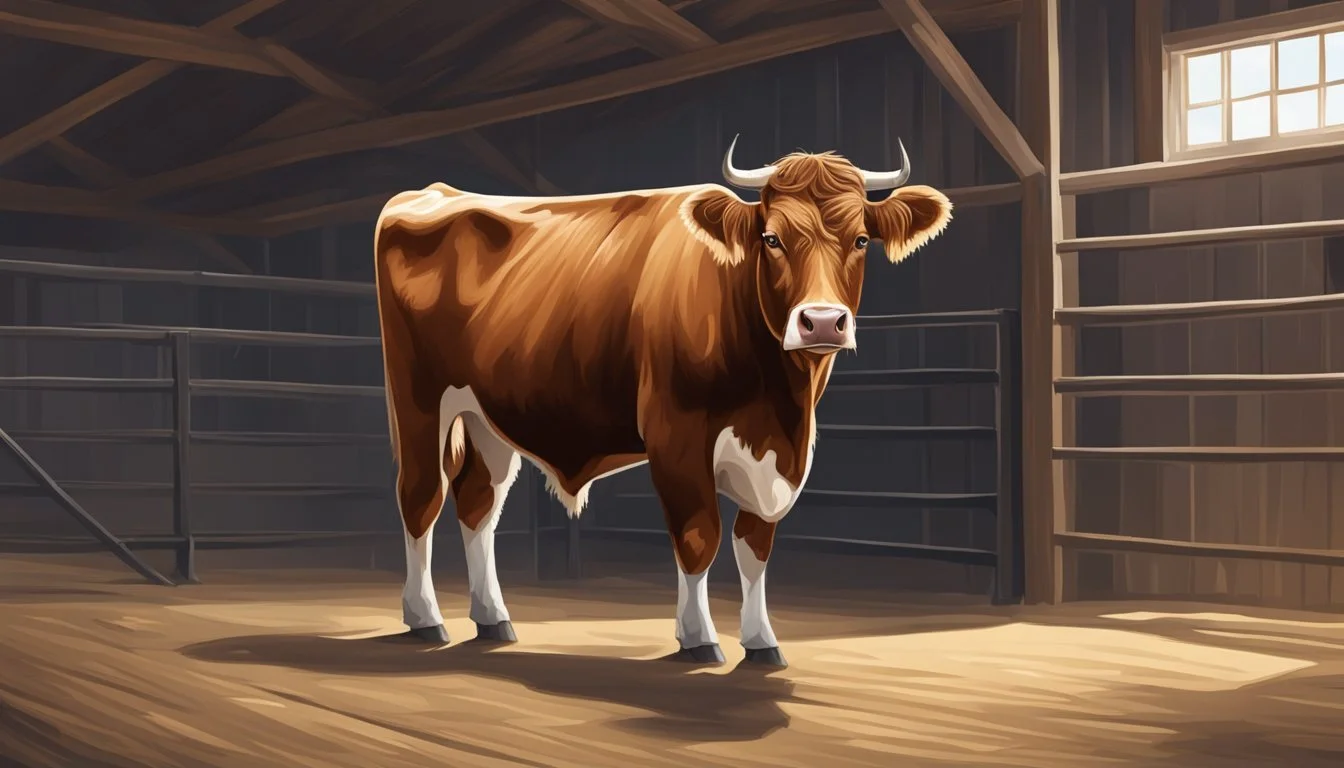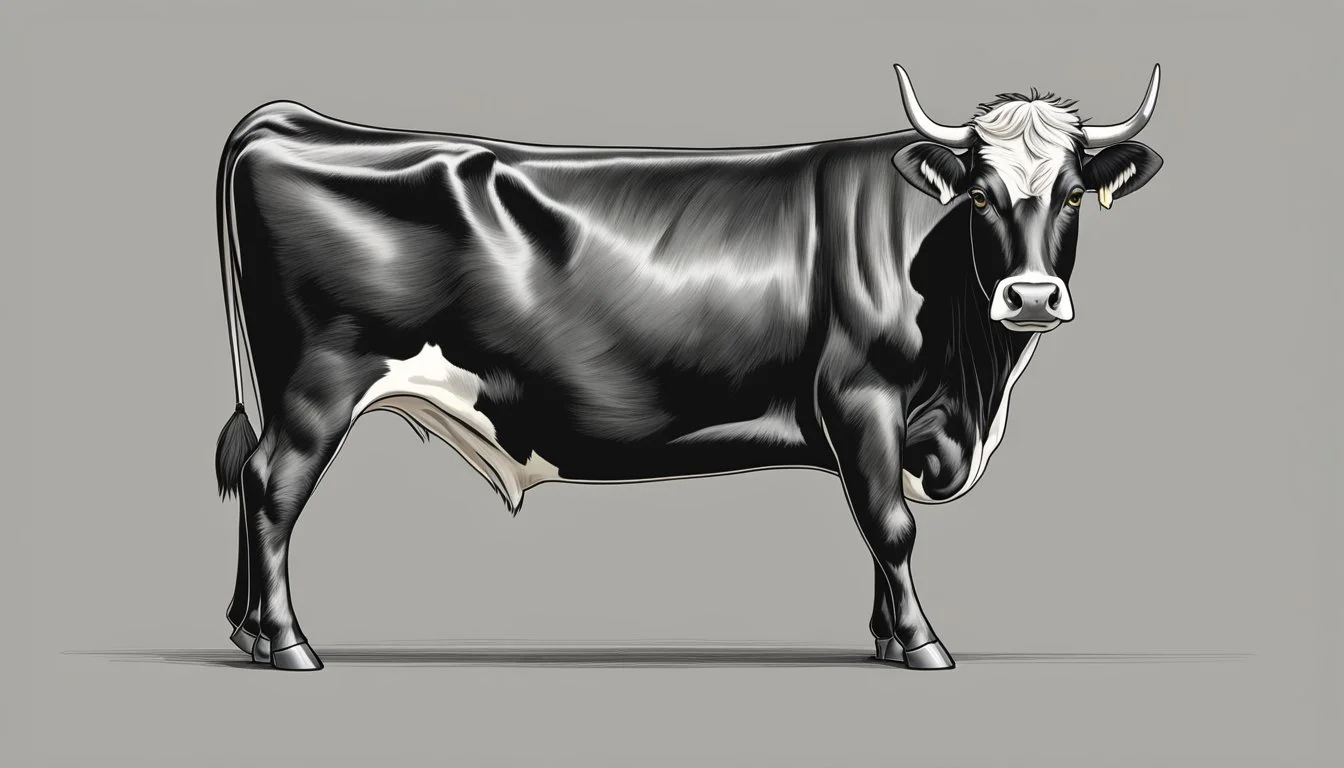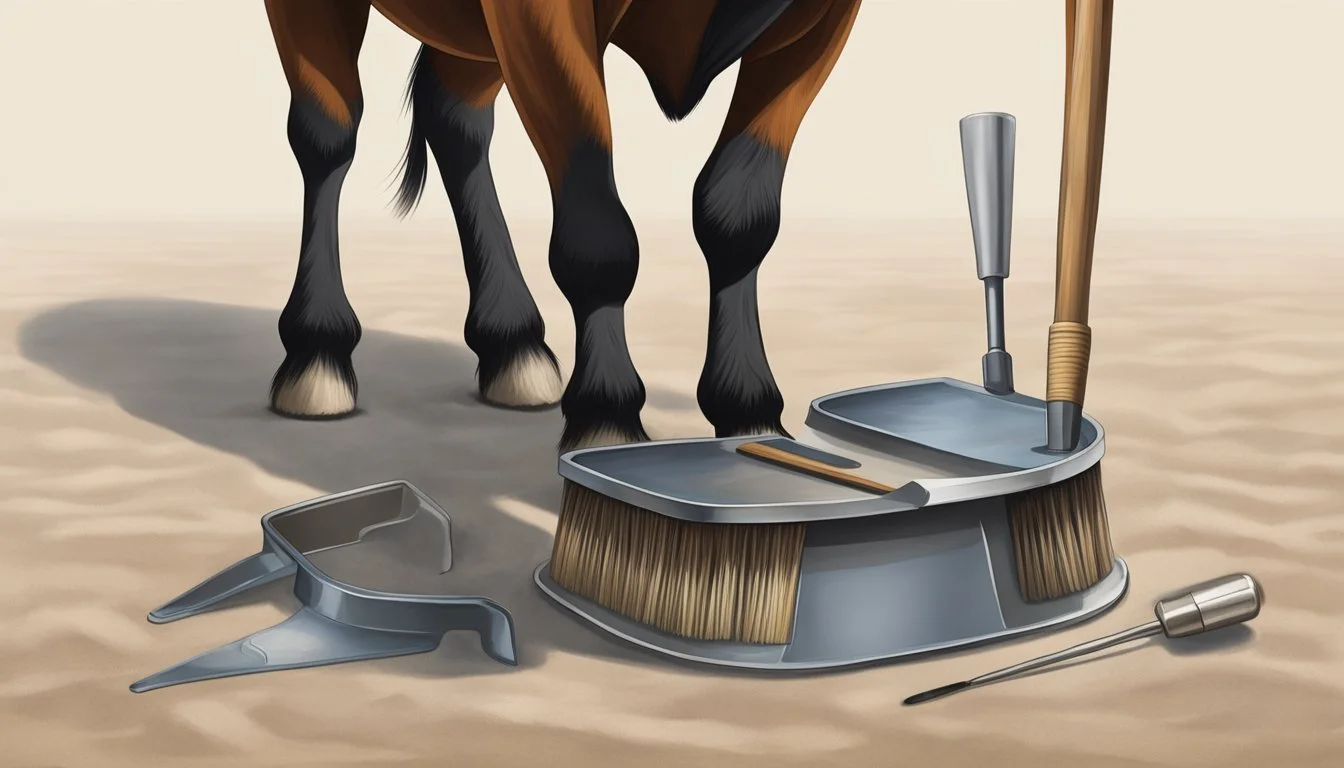Dexter Cattle Hoof Care
Essential Maintenance for Optimal Foot Health
Dexter cattle, a hardy and versatile breed, are well-suited for small-scale farms and thrive on a range of diets, from pasture-based to grain supplements. However, regardless of the breed or farming scale, hoof care is a critical aspect of maintaining cattle health and welfare. Healthy hooves are fundamental to a cow's mobility and overall well-being. Addressing hoof care involves regular observation to prevent and quickly detect issues such as overgrowth, injuries, or infections that could compromise the animal's quality of life and productivity.
Effective hoof care for Dexter cattle includes routine trimming and attention to proper nutrition. Both are essential for preventing common hoof problems that could lead to more significant health issues. A well-balanced diet fortified with essential nutrients like zinc, copper, and biotin supports the development of strong and resilient hooves. Routine trimming, on the other hand, helps maintain the correct hoof shape and angle, preventing unnecessary stress on the legs and enhancing the animal's comfort.
Maintaining hoof health also requires clean and well-maintained tools to avoid the introduction of pathogens. Regular cleaning and disinfection of hoof-care instruments are as crucial as the procedural care of the hooves themselves. By ensuring these practices are part of regular herd management, farmers can support the longevity and health of their Dexter cattle.
Understanding Dexter Cattle
Developing a comprehensive hoof care routine begins with a thorough understanding of the Dexter cattle breed. Dexter cattle possess unique physical and genetic characteristics that influence their hoof health.
Breed Characteristics
Dexter cattle originated from Ireland and are known for their smaller stature compared to other cattle breeds. They typically display a broad body, well-rounded hindquarters, and come in three primary colors: black, dun, and red. Historically horned, many Dexter cattle are now bred to be naturally polled (hornless). Their hardiness and adaptability make them suitable for various climates and conditions, thriving on pasture-based diets or grain supplementation.
Trait: Size, Description: Small, sturdy build
Trait: Body, Description: Broad, well-rounded hindquarters
Trait: Color Variants, Description: Predominantly black, dun, or red
Trait: Horn Status, Description: Historically horned but often naturally polled
Genetic Factors Affecting Hoof Health
The genetics of Dexter cattle play a significant role in hoof health. Sound genetics can contribute to strong, resilient hooves, whereas genetic defects might lead to issues such as poor hoof structure or susceptibility to certain hoof diseases. Proper breeding practices, selecting for favorable traits like good foot conformation and robust hoof structure, are critical in maintaining the health and well-being of a Dexter herd. The genetic diversity within the breed can influence their nutritional requirements for optimum hoof health, with essential nutrients including zinc, copper, and biotin being pivotal to the development of healthy hooves.
Genetic Aspect: Foot Conformation, Impact on Hoof Health: Influences hoof structure and resilience
Genetic Aspect: Nutrient Utilization, Impact on Hoof Health: Affects the quality of hoof growth
Genetic Aspect: Inherited Diseases, Impact on Hoof Health: May increase susceptibility to hoof ailments
Fundamentals of Hoof Anatomy and Health
Understanding the structural integrity and common ailments of Dexter cattle hooves is essential for maintaining their overall health and preventing discomfort.
Hoof Structure and Function
Dexter cattle hooves consist of two primary components: the outer hard shell called the hoof wall and the softer underside known as the sole. The hoof wall protects the inner structures, including the corium, a vascular, sensitive tissue that nourishes the hoof. The sole's thickness should be maintained around 0.25 inches to support the animal's weight and provide shock absorption. Proper function of these elements is crucial for the cattle's mobility and overall wellbeing.
Outer Hoof Wall: Hard and protective
Sole: Shock-absorbing and should be thick enough to support weight
Corium: Nutrient-providing tissue, sensitive to pressure and injury
Common Hoof Problems and Diseases
Healthy hooves are vital, but Dexter cattle can suffer from a range of hoof problems which can lead to pain and infection if not addressed. Laminitis is an inflammation of the sensitive layers inside the hoof, often causing severe pain and lameness. Digital dermatitis, also known as hairy heel warts, is a bacterial infection that can lead to lesions and discomfort. Foot rot and sole ulcers are other conditions that can compromise hoof health, leading to disease and mobility issues. Regular care and early identification of these problems are key to preventing further complications.
Laminitis: Inflammation causing pain and lameness
Digital Dermatitis: Bacterial infection leading to lesions
Foot Rot and Sole Ulcers: Painful conditions that can result in severe infection and lameness
Importance of Proper Hoof Maintenance
Proper hoof maintenance is pivotal for Dexter cattle, directly impacting their health and productivity. Effective management and regular care can prevent a range of issues that compromise these aspects.
Effects on Cattle Health and Productivity
Proper hoof care is essential for Dexter cattle's health and productivity. Their hooves support not just their body weight, but also influence their overall well-being. Poor hoof condition can lead to lameness, affecting cattle mobility and causing stress, which can in turn reduce feed intake and lower milk production. Additionally, lameness can impair fertility, making hoof maintenance paramount to maintaining a herd's reproductive efficiency.
Health: Optimal hoof condition supports disease prevention and overall vitality.
Productivity: Healthy hooves contribute to better grazing and feeding behaviors, directly influencing milk yield and growth rates.
Preventing Hoof Problems through Regular Care
Regular hoof care involves routine examination and trimming, which prevents overgrowth and the occurrence of disorders such as foot rot. Prevention also includes providing proper nutrition with essential nutrients like zinc and copper that support hoof health. Furthermore, maintaining dry, clean environments reduces the risk of infections and encourages faster treatment and intervention when necessary.
Prevention: Regular inspections and trims, along with maintaining a clean environment.
Management: Ensuring cattle diets include nutrients crucial for hoof development.
Intervention: Rapid response to signs of wear or damage to prevent further complications.
Hoof Care Techniques for Dexter Cattle
Proper hoof care is essential for maintaining the health and mobility of Dexter cattle. Attention to routine trimming, treating common ailments, and seeking professional care are critical components of hoof management.
Routine Hoof Trimming Practices
Dexter cattle require regular hoof trimming to prevent overgrowth and subsequent health issues. The hoof trimming process includes:
Trimming the toes: The toes should not be trimmed too short; a recommended practice is to leave a thickness of about 0.25 inches.
Trimming the outer claw: Similar to the toes, the outer claw of the hoof should be carefully trimmed using proper techniques to maintain balance and comfort.
Treating Common Hoof Ailments
Early detection and treatment of hoof ailments can prevent more severe issues. Common treatments include:
Application of bandages: When minor injuries or cracks occur, clean the affected area thoroughly and apply a bandage to protect the hoof during healing.
Topical treatments: For infections or ailments such as foot rot, apply appropriate topical treatments as per your veterinarian's advice.
Professional Hoof Trimming and Veterinary Care
While routine maintenance can often be handled by the cattle owner, certain situations require professional attention. These include:
Advanced hoof trimming: A professional hoof trimmer should be consulted for severe cases of overgrowth or hoof deformities.
Veterinary intervention: Veterinarians play a crucial role in diagnosing and treating serious hoof diseases or injuries that may be beyond the scope of routine care.
Nutrition's Role in Hoof Health
Proper hoof health in Dexter cattle hinges significantly on nutritional balance, focusing on essential minerals and proactive deficiency management.
Essential Nutrients for Healthy Hooves
Adequate diet and nutrition play a pivotal role in the development and maintenance of healthy hooves in Dexter cattle. Key elements include:
Minerals:
Zinc: It enhances hoof growth and repair, involved in keratin synthesis.
Copper: Vital for connective tissue formation and enzymatic processes that strengthen the hoof structure.
Calcium: Necessary for keratinization and the integrity of hoof horn.
Vitamins:
Biotin (Vitamin B7): Supports keratin formation, leading to improved hoof hardness and elasticity.
Proteins and Amino Acids: Provide the building blocks for hoof growth and tissue repair.
Trace Minerals: Small quantities of selenium and other trace minerals are important for preventing deficiencies that can lead to hoof deformities and diseases.
Addressing Nutritional Deficiencies
Recognizing and correcting nutritional deficiencies is crucial for hoof health management:
Weight Management: Excessive weight can stress hooves, so maintaining a balanced diet is essential.
Deficiencies: Signs such as poor hoof growth or lesions may indicate a lack in essential nutrients. Specific supplementation of zinc, copper, and vitamins might be necessary.
A well-balanced diet, tailored to the needs of Dexter cattle, can prevent most hoof problems related to nutritional deficiencies.
Optimizing the Living Environment
To ensure the health of Dexter cattle, they require a living environment that minimizes hoof problems and promotes overall well-being. Attention to housing and pasture conditions is essential.
Impact of Housing and Bedding
The choice of housing and bedding plays a significant role in maintaining hoof health. Dexter cattle benefit from a clean, dry, and well-ventilated space which reduces the accumulation of harmful bacteria and the risk of hoof diseases. Bedding should be selected for its absorbency properties and should be changed regularly to prevent damp conditions. Here are key considerations:
Flooring type: Use non-slip surfaces to prevent injuries
Cleanliness: Regular removal of manure and soiled bedding
Dryness: Ensure bedding remains dry to stop bacteria growth
Ventilation: Effective air flow to reduce moisture and ammonia levels
Managing Pasture and Outdoor Conditions
Beyond the housing, the outside environment, especially pasture and weather conditions, can affect hoof health significantly. Dexter cattle require well-maintained pastures to avoid hoof issues:
Pasture rotation: Prevents overgrazing and reduces hoof wear from rough forage
Ground conditions: Regular checking for harmful objects; surfaces should be even and free from excessive mud or gravel
Weather considerations: Providing shelter to protect from extreme weather mitigates stress and related hoof problems
Drainage: Proper pasture drainage is essential to prevent standing water and wet conditions that can lead to hoof deterioration
Special Considerations for Various Life Stages
Healthy hoof care is essential at every life stage of Dexter cattle to ensure optimal growth, metabolism, and overall well-being. Differences in age and metabolic demands require targeted approaches to hoof management for calves and senior cows.
Calf Hoof Care and Development
From birth, calves display rapid growth, necessitating vigilant hoof care. Calving can be a stressful time for both mother and calf, with the calf's hooves beginning to bear weight and adapt to their environment. It's vital to ensure that calves have access to a dry and clean bedding area to prevent infections. As their hooves develop, monitoring for deformities or abnormal wear is key. They require minerals like zinc, copper, and biotin in their diet, which are integral for strong hoof development. A balanced diet supports the normal metabolism and growth rate of young cattle.
Senior Cattle Hoof Health Management
As Dexter cattle age, their metabolism slows, and they may become less active, which can impact hoof health. Older cows require regular hoof inspections to detect and address issues such as overgrowth or wear. Their hooves may need more frequent trimming to prevent lameness, discomfort, and maintain mobility. Senior cattle's hoof care should adapt to their changing nutritional needs, with ongoing assessment to ensure they receive adequate nutrients to maintain hoof integrity. Preventative care, like maintaining dry conditions in their living spaces, becomes even more crucial to prevent infections and hoof diseases.
Advanced Hoof Care Topics
When it comes to Dexter cattle, addressing hoof care concerns requires a thorough understanding of hoof conformation and the utilization of technological advancements to maintain hoof health and prevent issues that could lead to lameness or affect milk production.
Studying Hoof Conformation and Corrective Measures
Proper hoof conformation is paramount in Dexter cattle to ensure even weight distribution across the hoof. Front feet particularly require attention, as they bear more weight and are prone to issues. An in-depth assessment can reveal imbalance between the heel and toe, potentially causing discomfort and lesions. When overgrown hooves are identified, corrective trimming is essential. It should maintain the natural balance and angle of the feet, focusing on both the heel and toe to prevent injury and promote a healthy stance and gait.
Corrective Measures include:
Trimming: Keep both the outer claw and the inner claw of the hoof at an optimal length, ensuring the weight is evenly distributed, which is critical for an animal's weight-bearing capacity.
Angle Adjustment: Adjust the hoof angle to prevent abrasive forces that lead to swelling or abscess in the sensitive structures of the hoof.
Groove Management: Addressing grooves in the hoof structure can help in pinpointing areas prone to abscesses or injuries.
Technological Advancements in Hoof Care
Advances in hoof care technology greatly benefit Dexter cattle, particularly in preventive and diagnostic measures. Sensors and imaging technology can detect early signs of discomfort or lesions, prompting timely intervention. Technological tools for measuring balance and conformation are vital for understanding the intricate details of each animal's hoof, allowing for precise trimming and care.
Notable Technological Contributions:
Laser Guided Systems: Ensure accurate trimming, reducing the risk of removing too much from the keratin-rich hoof wall or causing damage to the coronary band.
Pressure Mats: Provide insights into the weight distribution on the cattle's legs and hooves, influencing the way farmers approach the care of beef and dairy cows.
Automated Trimmers: Allow for consistent and efficient hoof maintenance, especially advantageous for large herds commonly found in beef cattle operations.


